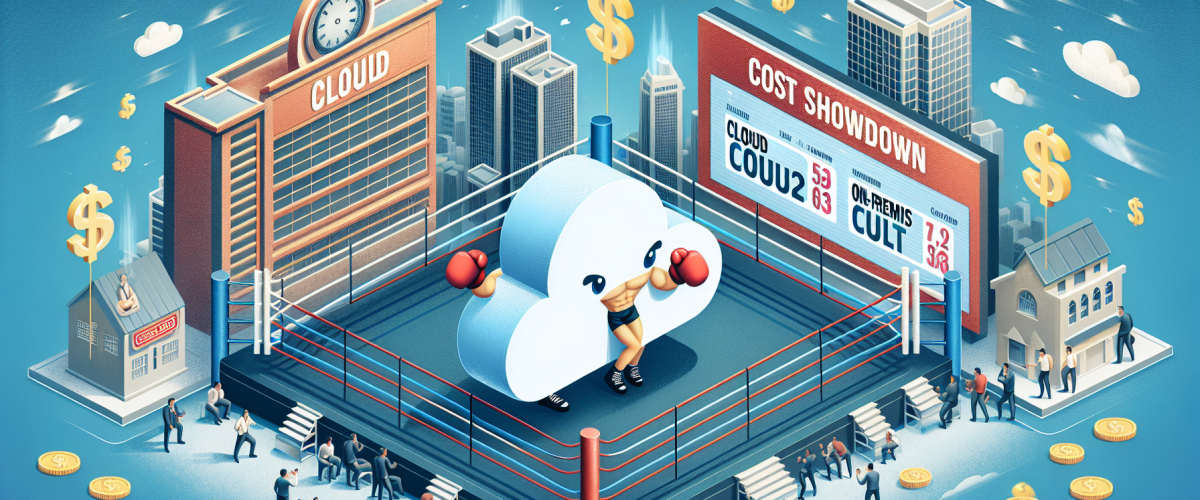
In the ever-evolving landscape of technology, businesses are faced with significant decisions regarding their IT infrastructure. One of the most crucial decisions centers around whether to adopt cloud computing or invest in on-premise solutions. Both options come with their advantages and drawbacks, but understanding the financial implications of each is essential for informed decision-making. This article explores the cost aspects of cloud computing versus on-premise solutions, helping businesses assess which route is the most financially viable.
Understanding the Basics
Before delving into the cost analysis, it’s important to define what cloud and on-premise solutions entail. Cloud computing refers to the delivery of various services over the internet, including storage, databases, servers, networking, software, and more. This model allows businesses to access resources and services on demand, often resulting in lower upfront costs and increased flexibility.
On-premise solutions, on the other hand, involve purchasing and maintaining hardware and software within the organization’s own facilities. This typically requires significant upfront investment, along with ongoing maintenance and operational costs. Understanding these fundamental differences is crucial for evaluating the financial implications of each option.
Cost Structure: On-Premise Solutions
Adopting an on-premise solution comes with several cost components:
- Initial Capital Expenditure: Organizations must invest heavily in hardware, operating systems, and software licenses. This capital expenditure can be substantial and often creates a financial burden.
- Maintenance and Upgrades: Once the systems are in place, regular maintenance and upgrades are necessary to ensure optimal performance. This usually requires hiring IT professionals or contracting services, leading to ongoing operational costs.
- Physical Space and Support: On-premise solutions require physical space and environmental controls, including power, cooling, and physical security. These infrastructure costs add to the overall expense.
- Depreciation: Hardware and software investments depreciate over time; managing this depreciation accurately can complicate financial planning.
Cost Structure: Cloud Solutions
The cost structure for cloud services, while seemingly less clear-cut, is often more predictable in the long run:
- Pay-as-You-Go Pricing: Most cloud services operate on a subscription model, allowing businesses to pay only for what they use. This reduces the need for significant upfront investment.
- Reduced Overhead Costs: By utilizing cloud services, businesses can often decrease their expenditure on IT staff and infrastructure, redistributing these resources elsewhere.
- Scalability: Cloud solutions can easily scale with a business’s growth, meaning companies only need to pay for additional resources as they expand, rather than overcommitting to fixed on-premise capacities.
- No Maintenance Worries: The cloud provider handles maintenance, security updates, and backup processes, relieving the business of these ongoing responsibilities.
Long-Term Financial Considerations
While the upfront costs and operational expenses are critical factors, businesses must also consider long-term financial implications:
- Flexibility and Agility: As market demands change, cloud services allow businesses to adapt quickly without the need for significant reinvestment, thus resulting in potentially lower costs over time.
- Impact on Cash Flow: The pay-as-you-go model associated with cloud services can lead to better cash flow management by balancing expenditures with revenues.
- Hidden Costs: Both options can come with hidden costs. For instance, cloud services can incur costs related to data retrieval and transfer, while on-premise solutions may face issues like overspending on unnecessary hardware.
Risk Factors and Compliance Considerations
Another layer of complexity in the cost analysis involves risks and compliance obligations. On-premise solutions typically provide businesses with more control over their data and compliance requirements, which can reduce potential financial penalties related to data breaches.
Conversely, reputable cloud providers invest heavily in security measures and compliance certifications, which can offer superior protection for sensitive data than many businesses can afford independently. However, businesses must ensure that their data privacy and compliance requirements are met, which could incur additional costs.
Conclusion
Deciding between cloud and on-premise solutions involves a multifaceted analysis of costs, risks, and business needs. While cloud computing offers significant advantages in terms of operational flexibility, scalability, and often lower upfront costs, on-premise solutions can provide greater control and predictability in financial planning. The best choice will depend on a business’s unique requirements, budget, and long-term strategy. Ultimately, understanding the cost structures and financial implications of each option is crucial to making an informed decision that aligns with a company’s goals.
FAQs
1. What are the main advantages of cloud computing?
Cloud computing offers flexibility, scalability, lower upfront costs, and reduced maintenance responsibilities, as providers handle most infrastructure and operational tasks.
2. Are there hidden costs associated with cloud services?
Yes, while cloud services are often cost-effective, businesses should be aware of potential hidden costs related to data transfer, backup solutions, and resource over-provisioning.
3. How can businesses ensure data security when using cloud services?
Businesses should choose reputable cloud providers that adhere to compliance standards and offer robust security measures, including encryption and regular audits.
4. Which option is better for a growing company?
Cloud solutions are often better suited for growing companies due to their scalability and lower initial investment, allowing businesses to adapt quickly to changing demands.
5. Can on-premise solutions be more cost-effective over the long term?
In some cases, on-premise solutions can be more cost-effective over time, especially for larger organizations with stable infrastructure needs and compliance requirements.


